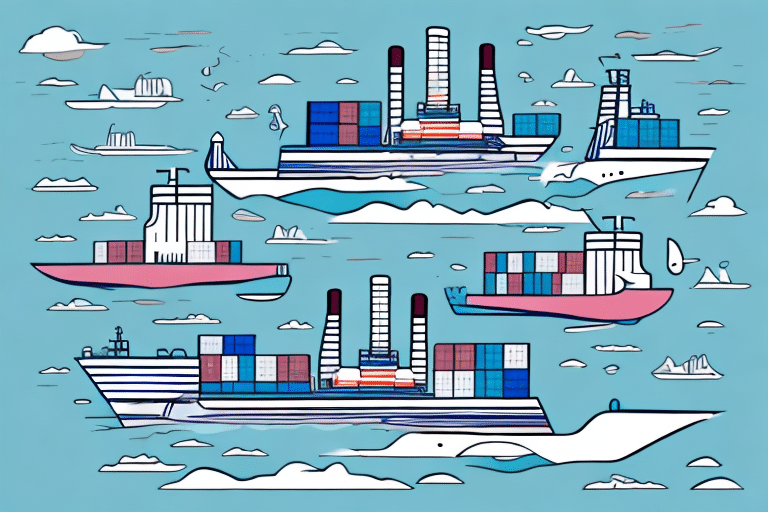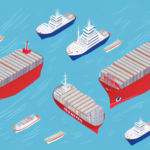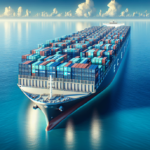Understanding Freight and Shipping
When transporting goods, businesses primarily choose between freight and shipping. Although these terms are often used interchangeably, they represent distinct methods of transportation with unique characteristics.
What is Freight?
Freight refers to the transportation of goods via land-based modes such as trucks, trains, or barges. It is versatile, accommodating various types of cargo, including oversized and heavy items. Freight can be utilized for both domestic and international transport, making it a flexible option for many businesses.
What is Shipping?
Shipping typically involves the movement of goods via ocean or air. It is predominantly used for international trade, allowing businesses to transport large quantities of goods over long distances. Shipping requires navigating complex logistics, including customs clearance and compliance with international regulations.
Key Differences Between Freight and Shipping
- Mode of Transport: Freight uses land-based transportation, while shipping relies on ocean or air.
- Scope: Freight is suitable for both domestic and international transport, whereas shipping is mainly for international trade.
- Logistics Complexity: Shipping involves more complex logistics due to customs and international regulations.
Pros and Cons of Freight
Advantages of Freight
- Versatility: Freight can handle a wide range of goods, including heavy and oversized items.
- Cost-Effective for Domestic Transport: Often more affordable for short-distance or domestic shipments.
- Reliable Delivery Times: Land-based transport typically faces fewer delays compared to international shipping.
- Environmental Impact: Rail freight, in particular, is more environmentally friendly compared to road transport.
Disadvantages of Freight
- Higher Costs for Long-Distance: Can be more expensive than shipping for international routes.
- Planning and Coordination: Requires meticulous planning for loading, permits, and documentation.
- Security Risks: Freight is more susceptible to theft or damage during transit, necessitating additional security measures.
Pros and Cons of Shipping
Advantages of Shipping
- Economical for International Trade: More cost-effective for transporting large quantities over long distances.
- Capacity: Capable of handling massive volumes of goods, making it ideal for bulk shipments.
- Flexible Shipping Options: Offers various services such as expedited shipping for time-sensitive deliveries.
Disadvantages of Shipping
- Complex Logistics: Involves navigating customs, import/export regulations, and potential delays at ports.
- Potential for Damage: Large shipments are at risk of damage during handling and transit.
- Environmental Concerns: Ocean and air shipping contribute significantly to carbon emissions and environmental degradation.
Cost Comparison: Freight vs Shipping
The cost of freight versus shipping depends on several factors, including distance, type of goods, and urgency of delivery. Generally, freight is more cost-effective for domestic shipments, while shipping becomes more economical for international routes.
Factors Influencing Costs
- Distance: Shorter distances favor freight, whereas longer distances lean towards shipping.
- Weight and Volume: Heavier and bulkier items are typically cheaper to transport via freight.
- Speed of Delivery: Expedited shipping services incur higher costs.
According to the Bureau of Transportation Statistics, transportation costs account for approximately 8-10% of total product costs in the United States, highlighting the significant impact of choosing the right method.
Factors to Consider When Choosing Between Freight and Shipping
Selecting the appropriate transportation method requires careful consideration of various factors to ensure efficiency and cost-effectiveness.
Type of Goods
Perishable or fragile items may necessitate specialized handling available through shipping services, while heavy machinery might be better suited for freight.
Budget Constraints
Evaluate your budget to determine which method offers the best balance between cost and service quality.
Delivery Timeline
Assess your delivery requirements. Freight might offer more reliable timing for domestic deliveries, whereas shipping can provide expedited options internationally.
Destination
Consider whether the goods are being transported domestically or internationally, as this will influence the choice between freight and shipping.
Transportation Management in Freight and Shipping
Effective transportation management is crucial for optimizing freight and shipping operations. It involves overseeing logistics, route planning, carrier selection, and shipment tracking.
Benefits of Transportation Management
- Efficiency: Streamlines operations to reduce delays and costs.
- Visibility: Enhances tracking and monitoring of shipments in real-time.
- Cost Savings: Identifies the most cost-effective routes and carriers.
Implementing transportation management systems (TMS) can lead to significant improvements in supply chain performance. For more information, refer to the Supply Chain Brain resources.
Future Trends in Freight and Shipping Industries
The freight and shipping industries are evolving rapidly, influenced by technological advancements and changing market demands.
Emerging Technologies
- Autonomous Vehicles: Self-driving trucks and ships promise to enhance efficiency and reduce labor costs.
- Blockchain: Enhances transparency and security in supply chain transactions.
- Internet of Things (IoT): Enables real-time tracking and monitoring of shipments.
Sustainability Initiatives
There is a growing emphasis on reducing carbon emissions and adopting eco-friendly practices. Companies are investing in green technologies and sustainable logistics to minimize environmental impact.
Growth of E-Commerce
The surge in online shopping continues to drive demand for faster and more reliable shipping options, pushing the industry towards greater innovation and customer-centric solutions.
Staying informed about these trends is essential for businesses to adapt and maintain competitive advantage in the dynamic landscape of freight and shipping.






















